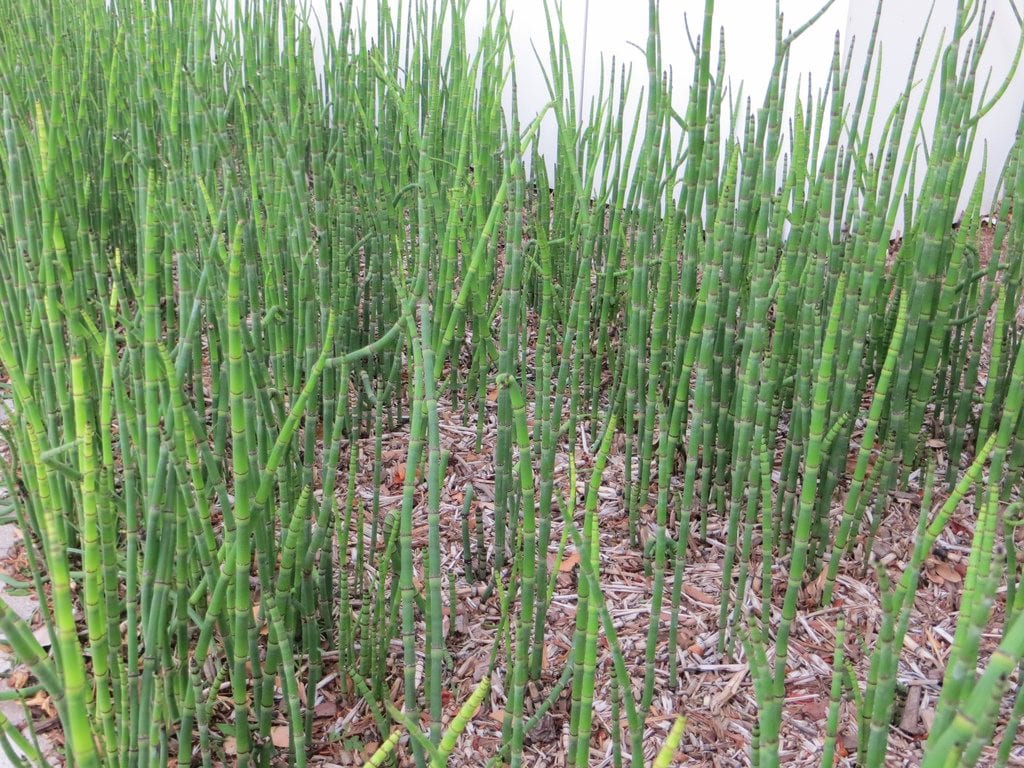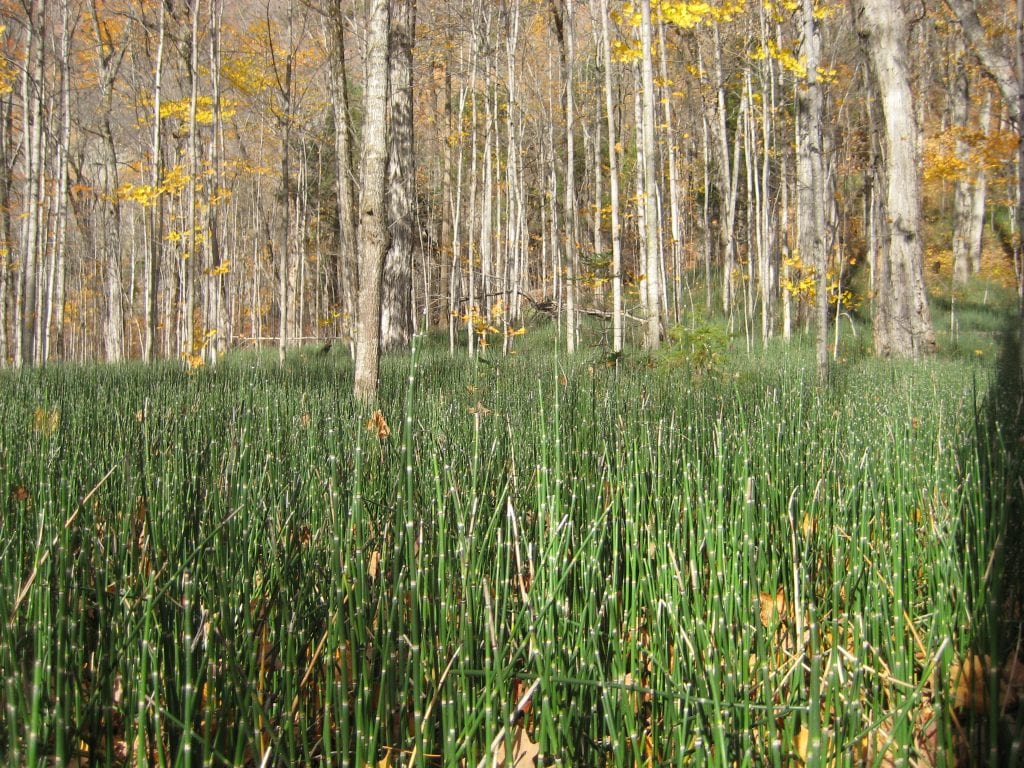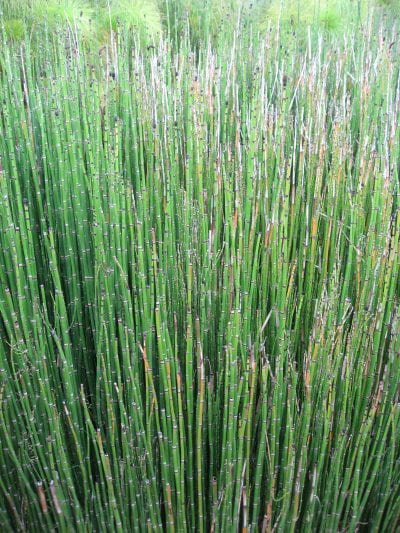
Image - Wikimedia / Joel Abroad
Sometimes in a garden or a patio the aim is not for the plants to attract attention, but for them to cause an effect, to give "rhythm" and / or volume to a certain corner ... or to have interesting properties. That is the case of Equisetum hyemale. By that name you may not know what it is, but if I tell you that it is known as a horsetail, it may sound more familiar to you 🙂.
The problem is that that name is used to call all the species of the genus Equisetum, and this time we are only going to focus on one, which by the way it is one of the most beautiful and resistant.
Origin and characteristics

Image - Wikimedia / hebdromadaires
It is a rhizomatous shrub native to Europe, Asia and North America known as the winter horsetail or Horse tail. Develops vertical hollow stems up to 90 centimeters tall. The barely visible leaves sprout around the stem in such a way that they form a narrow black-green band. It does not produce flowers or seeds, but reproduces itself by taking out shoots by the roots.
Depending on the conditions of the place, it can be evergreen or deciduous, but that is not really a problem, since it grows at a very good rate 😉.
Medical uses
If the whole plant is cooked, it can be used to treat gastritis, ulcers, vomiting and other problems related to the digestive system, as well as kidney and urinary tract diseases.
What are their cares?

Image - Wikimedia / Linne1
Do you want to have a copy of Equisetum hyemale? Here's how to take care of it:
- Location: it must be outside, in full sun or in semi-shade.
- Earth:
- Pot: use universal growing medium that has good drainage, like this one you can buy here.
- Garden: grows in fertile, well-drained soils.
- Irrigation: water very often. It is not an aquatic plant, but almost 🙂. Keep the soil always moist.
- Subscriber: in spring and summer with organic fertilizers.
- Multiplication: by division in spring.
- Planting or transplanting time: in spring, when the risk of frost has passed.
- Rusticity: resistant up to -7ºC.
What did you think of this plant?
I love her! I want to multiply the lot.
Hi Claudia.
This plant multiplies well by division of the rhizome.
Regards!
Very interesting, they gave it to me to put inside a pond ,,,,,, but I don't know how it will turn out ,,,,,,
Hello Cris.
It better be on the edge of the pond. In the water it can go bad.
Regards!